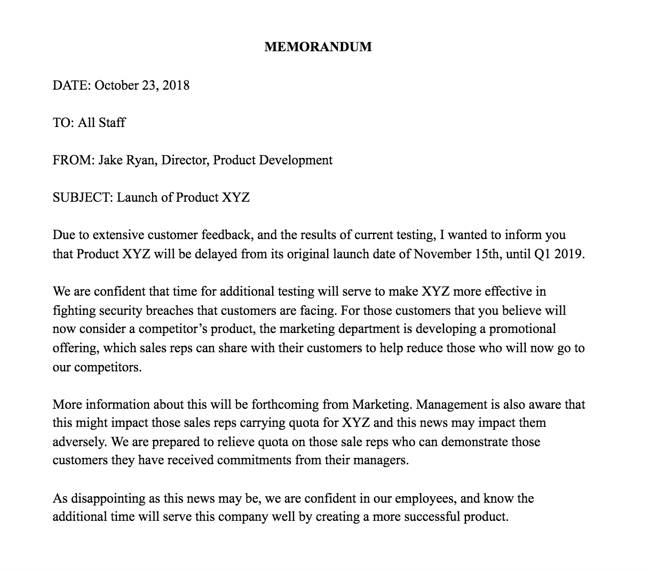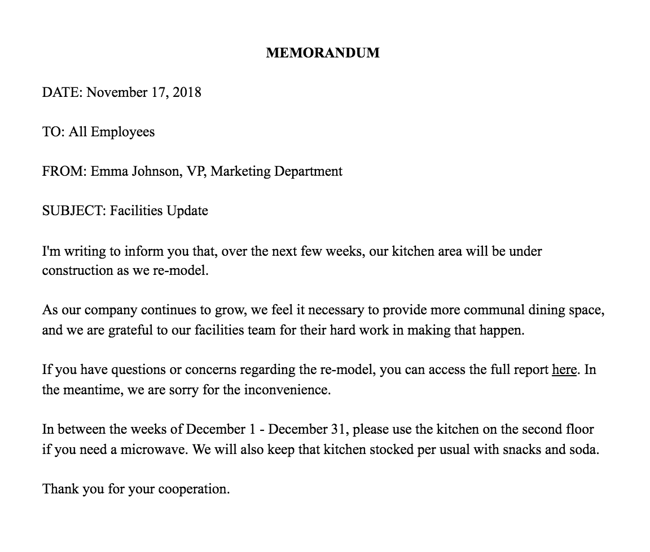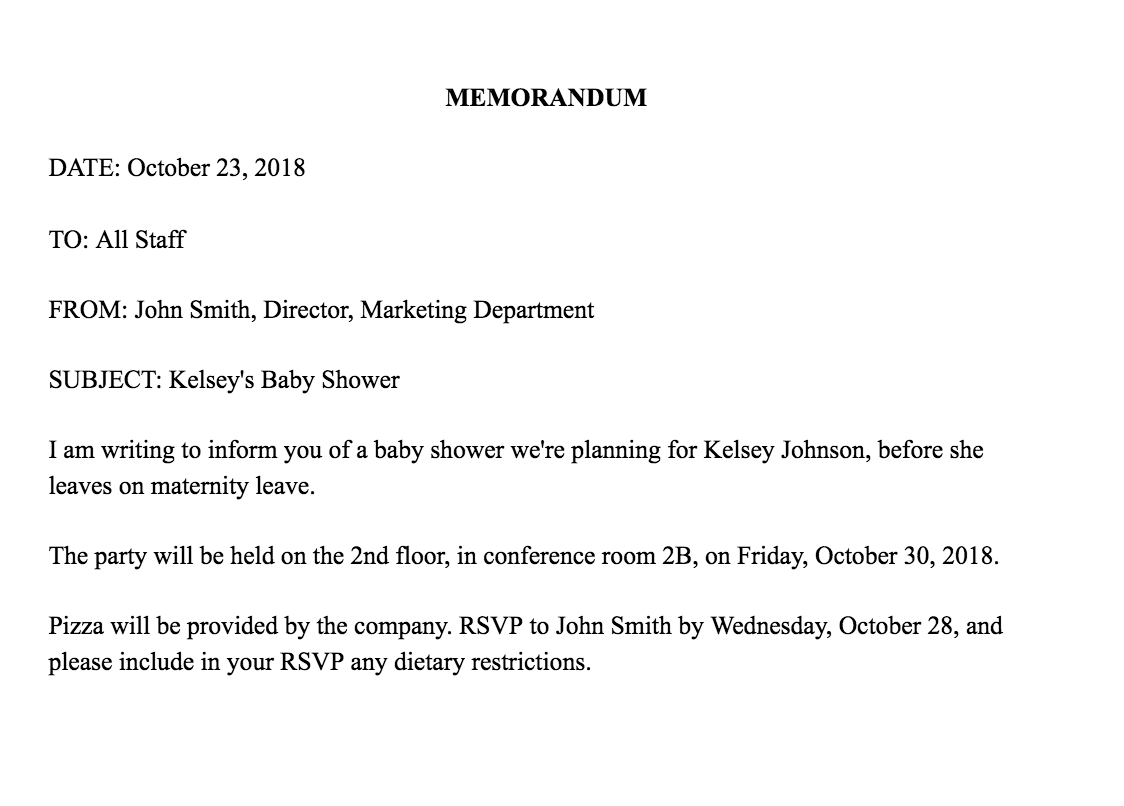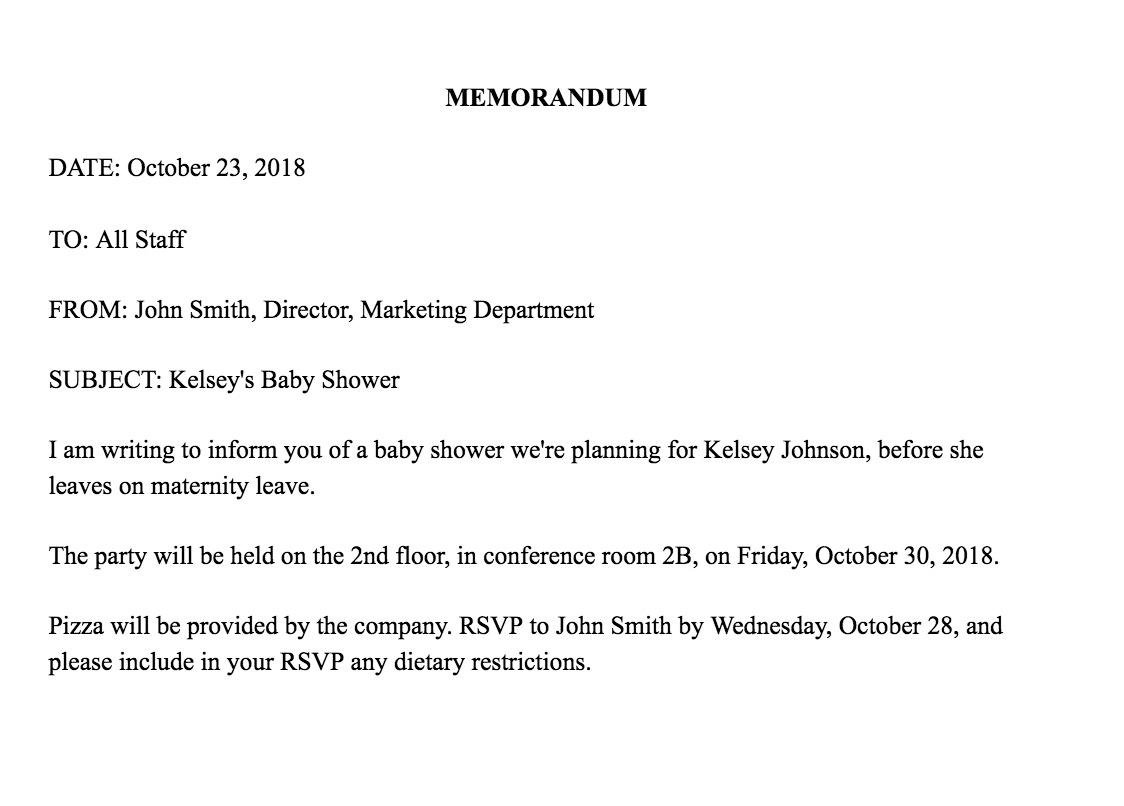How to Write Memo – Memo is a document which is used to express the opinion of any person or group of people. It aims at providing detailed information about the subject with less formality. By opposition with letter, the memo does not need to be sent via mail unlike a letter. It is often written on simple white paper. You can distribute it in oral or verbal form. Here are some business memos that are very useful for you to write for your business purpose.
A memo is a short message that’s typically used to communicate official business policies and procedures within a company. Memos are usually meant as a mass communication to all members of an organization rather than a one-on-one personal message. There are many types of memos, but they typically provide a progress report, asking someone or a team for something, confirm an agreement between parties) or request input on how to solve a problem.
Table of Contents
When you should write a memo
For the most part, the purpose of writing a memo is to inform. However, memos can occasionally include a call to action or a persuasive element.
Here are some instances when a memo might be useful:
- Informing employees about company policy or process changes
- Providing an update on key projects or goals
- Making an announcement about the company, such as an employee promotion or new hire
- Reminding employees about a task that needs to be completed
- Making a request of all employees
- Communicating a message that employees will refer to more than once, such as a detailed proposal or recommendation
Memos are also an efficient way to communicate brief but important messages to a wide audience within the business. This can include product changes, meeting schedules, procedure changes, policy additions, summaries of agreement terms and reminders. Additionally, you can send a memo when you want your audience to print or save the information contained in the message in some way for later reference.
How to write a memo
While each memo should be written to address its unique needs, there are a few steps you can follow to create a clear, highly readable document. Like many other professional business documents, memos will include an introduction, body and conclusion.
- Start with a header that clearly indicates that the communication is a memorandum, the intended recipients, the sender, the date and the subject.
- Write an introduction that uses a declarative sentence to announce the main topic of the memo.
- Include a body paragraph with discussion points that elaborate or list the main ideas associated with the memo’s topic. To make your memo easier to read, write in short paragraphs and break the information into smaller, more manageable chunks. Since the recipients will likely be scanning the memo, you should also use subheadings and bulleted lists when possible.
- Conclude your memo with any remaining information following the body paragraph. This is a summary of the memo and should clearly inform the reader of any actions required.
- Close with your name, email address and phone number in case anyone needs to contact you.
- Ensure any necessary attachments are included if your intended recipients will need to refer to other information, such as a graph, image or chart, below the end of your memo.
Business Memo Template
MEMORANDUM
TO:
FROM:
DATE:
SUBJECT:
I’m writing to inform you that [reason for writing memo].
As our company continues to grow … [evidence or reason to support your opening paragraph].
Please let me know if you have any questions. In the meantime, I’d appreciate your cooperation as [official business information] takes place.
4 Free Memo Templates
Fill out this form to get your templates.
Open formHi 👋 What’s your name?First NameLast NameHi null, what’s your email address?Email AddressAnd your phone number?Phone NumberWhat is your company’s name and website?CompanyWebsiteHow many employees work there?
Header:
In your header, you’ll want to clearly label your content “Memorandum” so your readers know exactly they’re receiving. Then, you’ll want to include “TO”, “FROM”, “DATE”, and “SUBJECT”. This information is relevant for providing content, like who you’re addressing, and why.
Paragraph One:
In the first paragraph, you’ll want to quickly and clearly state the purpose of your memo. You might begin your sentence with the phrase, “I’m writing to inform you … ” or “I’m writing to request … “. A memo is meant to be short, clear, and to-the-point. You’ll want to deliver your most critical information upfront, and then use subsequent paragraphs as opportunities to dive into more detail.
Paragraph Two:
In the second paragraph, you’ll want to provide context or supporting evidence. For instance, let’s say your memo is informing the company of an internal re-organization. If this is the case, paragraph two should say something like, “As our company continues to grow, we’ve decided it makes more sense to separate our video production team from our content team. This way, those teams can focus more on their individual goals.”
Paragraph Three:
In the third paragraph, you’ll want to include your specific request of each employee — if you’re planning a team outing, this is the space you’d include, “Please RSVP with dietary restrictions,” or “Please email me with questions.”
On the contrary, if you’re informing staff of upcoming construction to the building, you might say, “I’d appreciate your cooperation during this time.” Even if there isn’t any specific action you expect from employees, it’s helpful to include how you hope they’ll handle the news and whether you expect them to do something in response to the memo.
Business Memo Template Format
The format depicted in the templates above is designed to effectively communicate your message. A memo should disseminate the necessary information in a way that is easy for a mass number of employees to digest.
An accurate subject line will alert them that this memo is relevant to them specifically. And beginning with an executive summary allows recipients to understand the general message before you dive deeper into the details. The background information offers context to the message, and the overview and timeline should answer questions that are likely to come up.
Business Memo Template Examples
Different industries or situations will require slightly different memos. Certain ones will need to be longer or shorter, others may not have a timeline, and some will have extensive background information. The format of your memo should change to fit the message you want your employees to receive.
Launch Delay Memo

The objective of this memo is to announce that the launch of a product will be delayed. The introduction includes the new date, so a timeline or long overview isn’t necessary. This format of memo could be applied to other situations where a simple, but important, change is occurring. Other date changes, promotions, milestones, or product announcements could also utilize this format.
Building Update Memo

There are logistical aspects of a business that concern your employees, but don’t necessarily involve their work. This memo depicts an example about the kitchen in the office. It’s a bit of an inconvenience, but shouldn’t affect their work much. This could be applied to other building updates, work from home days, or other widespread but minor announcements.
Community Memo

Celebrations, events, theme days, or other fun things for your employees can also be communicated through memos. Community memos like this example are generally shorter because they don’t require much background information or many details. These just need to include a summary, date, and location at minimum.
Write Your Memos To the Point
The main difference between a memo and just an email is not the level of complexity, it’s the size of the audience. A memo can be simple or intricate, as long as it effectively communicates your message and is relevant to the receiving group of employees. And the message itself should be clear and concise, no matter which memo format you use.
Conclusion
A memorandum is a written or printed communication. It can be a record of facts put down in writing, the product of a business transaction, a transaction within a business organization, a statement of facts to guide action, a report of an occurrence or event, or any other written communication. Memoranda are usually concise and factual.
